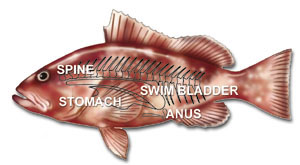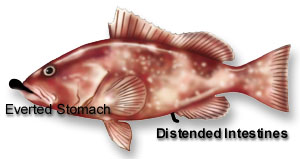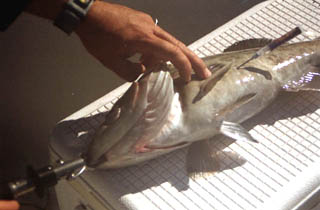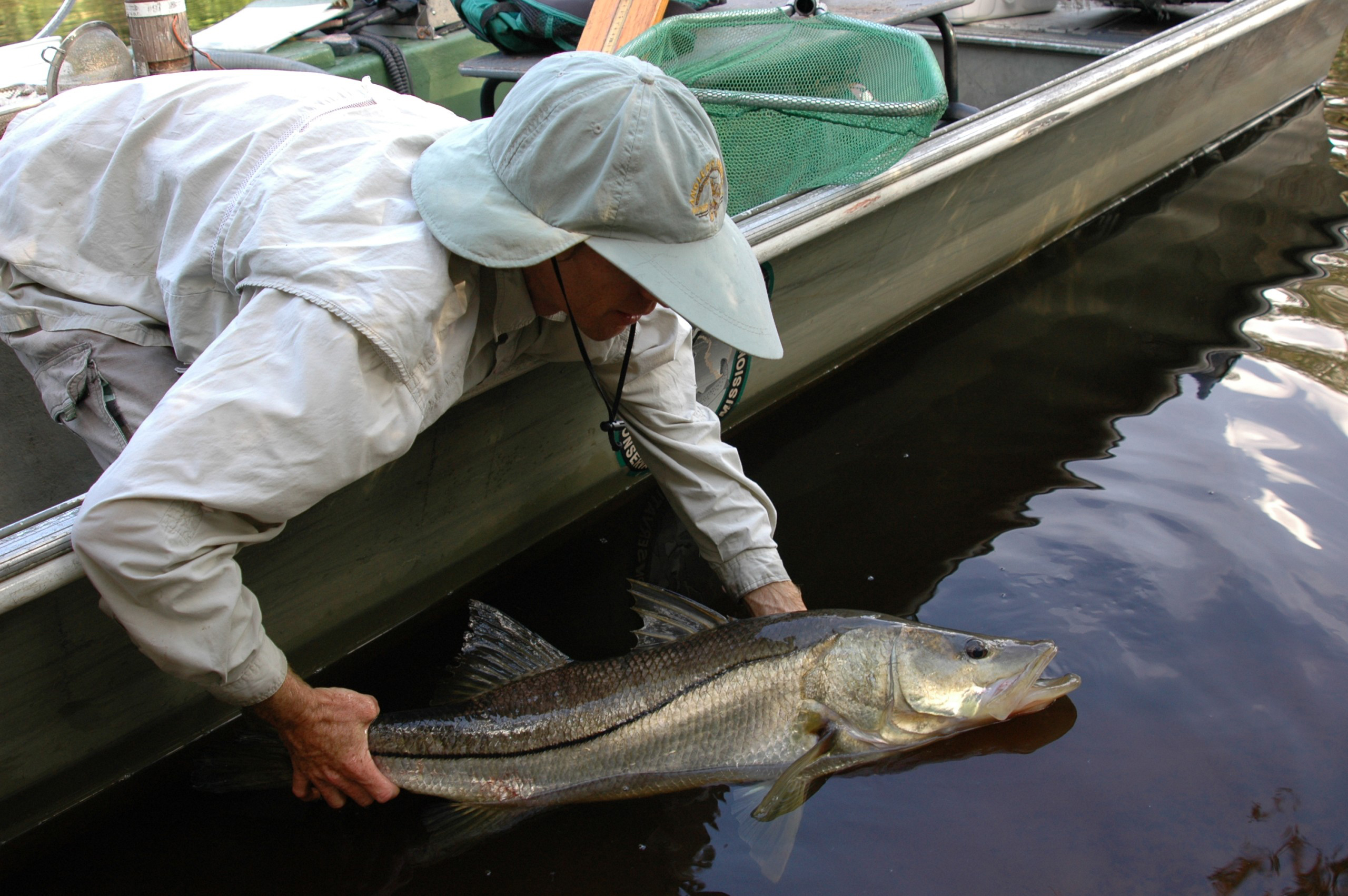Proper release of marine fishes has become increasingly important to anglers. In order to maintain healthy fish populations, each angler is responsible for carefully handling fish that are hooked, and releasing fish that are not harvested so they can spawn or perhaps be caught again.
Reef fish may require special handling during release to decrease mortality. This information is based on the best available research regarding reef fish venting as interpreted by a Florida Sea Grant Advisory Panel assembled to review this research. Although the authors realize the need for further study of the influence of venting on long-term reef fish survival, sufficient information exists to warrant providing guidelines to assist anglers in successful release practices.
Barotrauma Video Series
Florida Sea Grant extension agents Betty Staugler and Angela Collins, in partnership with Shark Brothers Multimedia, created a 5-part video series on barotrauma and options for mitigating its effects, including use of venting and descending techniques.
How To Vent A Fish (Watch the Video from Mote Marine Laboratory)
NOTE: Watching this video requires use of Real Player, a free media player for your browser. You may download the latest version at this link: http://www.real.com/realplayer

 depth in the water column. The gas in the swimbladder can over-expand when fish are brought quickly to the surface by hook and line. This can result in serious injury to the fish, and if released in this buoyant condition, the fish may float away and die from exposure to the elements or become an easy target for predators. This defeats the purpose of fishery management laws such as minimum size restrictions and daily bag limits.
depth in the water column. The gas in the swimbladder can over-expand when fish are brought quickly to the surface by hook and line. This can result in serious injury to the fish, and if released in this buoyant condition, the fish may float away and die from exposure to the elements or become an easy target for predators. This defeats the purpose of fishery management laws such as minimum size restrictions and daily bag limits. internal organs. If damage is not excessive, the organs will return in place on their own, once the gases are expelled. Venting also will allow the fish to overcome buoyancy problems and swim down to habitat depth, enhancing its immediate survival.
internal organs. If damage is not excessive, the organs will return in place on their own, once the gases are expelled. Venting also will allow the fish to overcome buoyancy problems and swim down to habitat depth, enhancing its immediate survival. not attempt to push it back into the fish’s body. Expelling the swimbladder gases will allow the stomach to return to its normal position within a few hours. Hold the fish gently but firmly on its side and insert the venting tool at a 45-degree angle approximately one to two inches back from the base of the pectoral fin.
not attempt to push it back into the fish’s body. Expelling the swimbladder gases will allow the stomach to return to its normal position within a few hours. Hold the fish gently but firmly on its side and insert the venting tool at a 45-degree angle approximately one to two inches back from the base of the pectoral fin. simply puncturing the fish is undesirable and can result in a mortal injury.
simply puncturing the fish is undesirable and can result in a mortal injury.